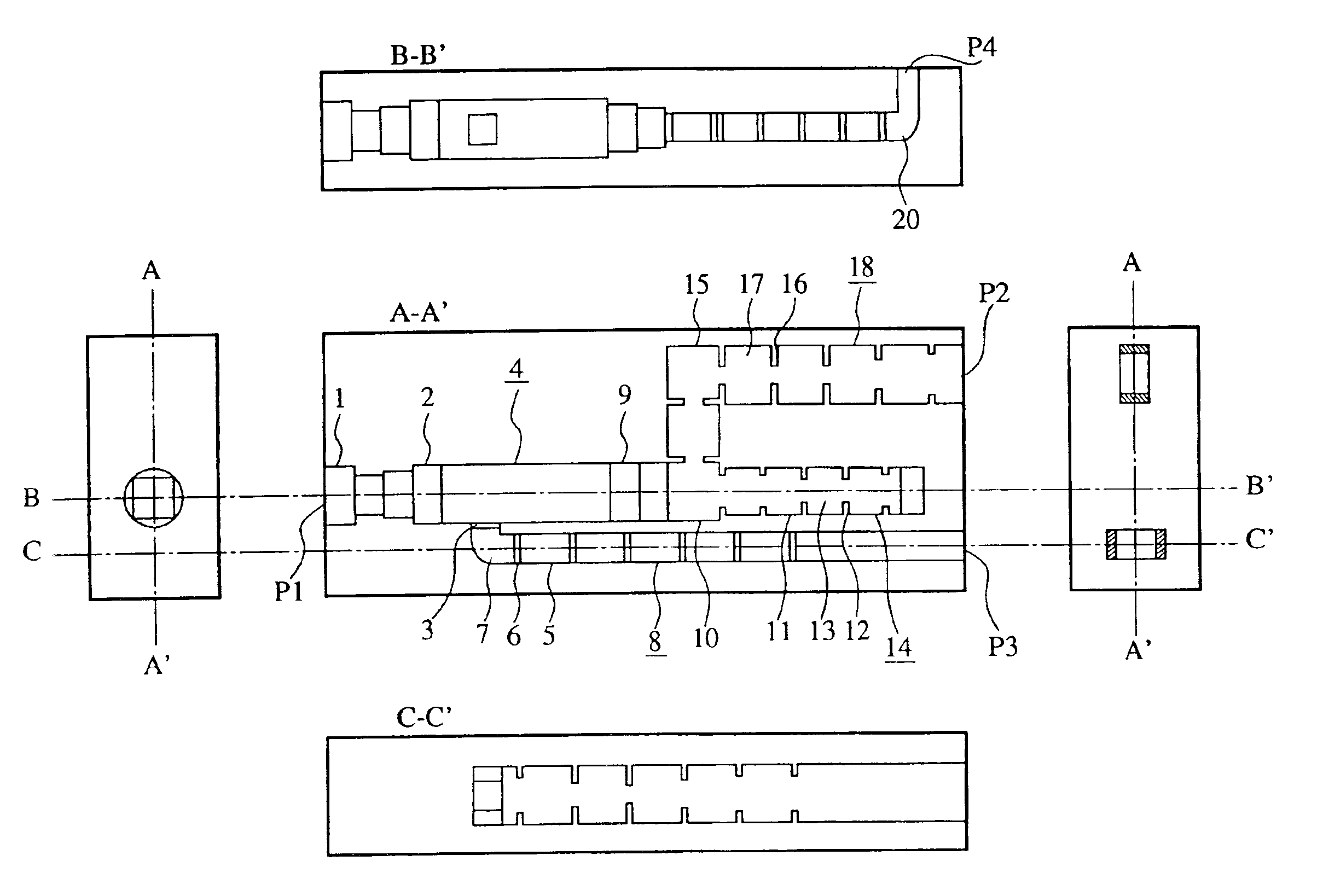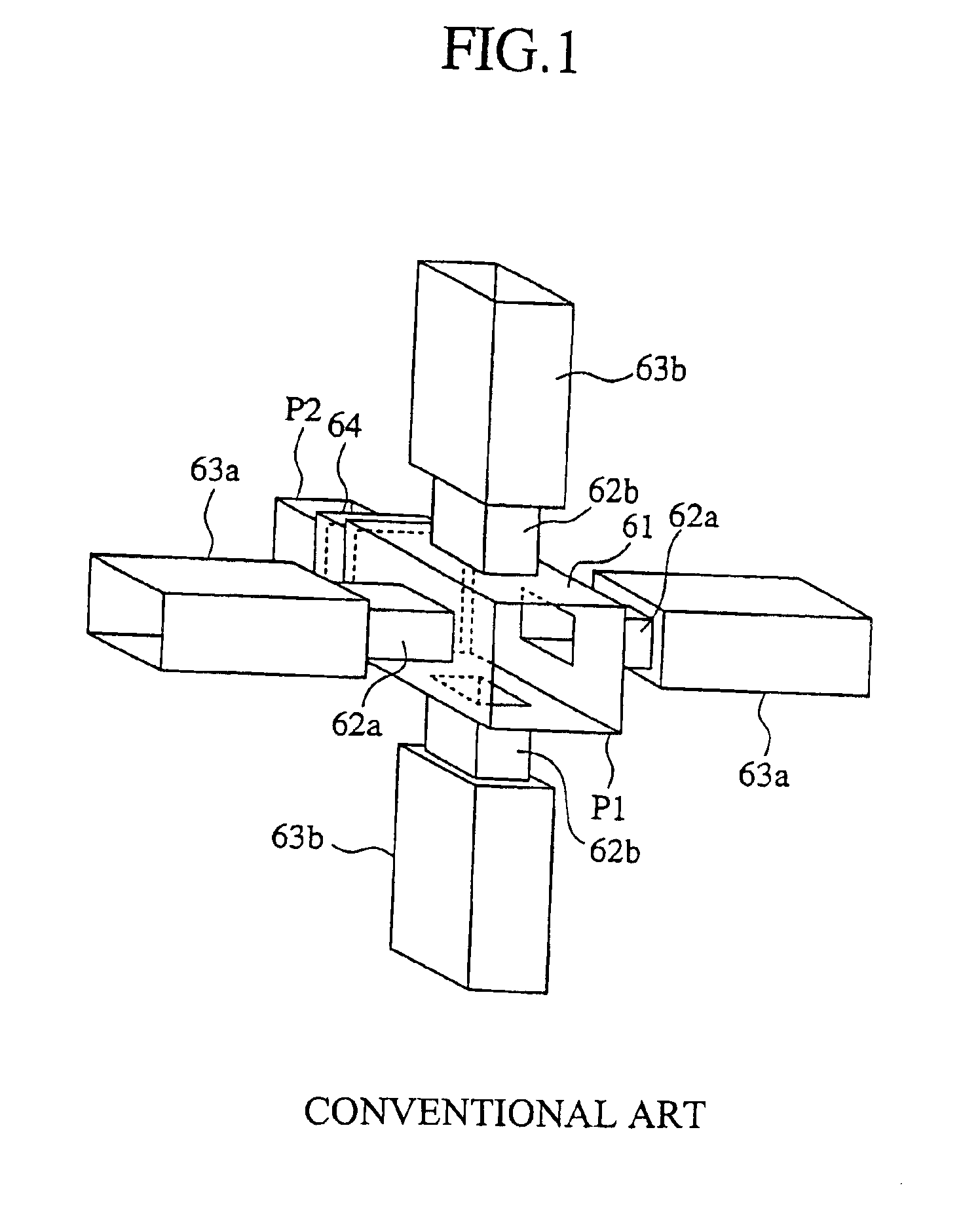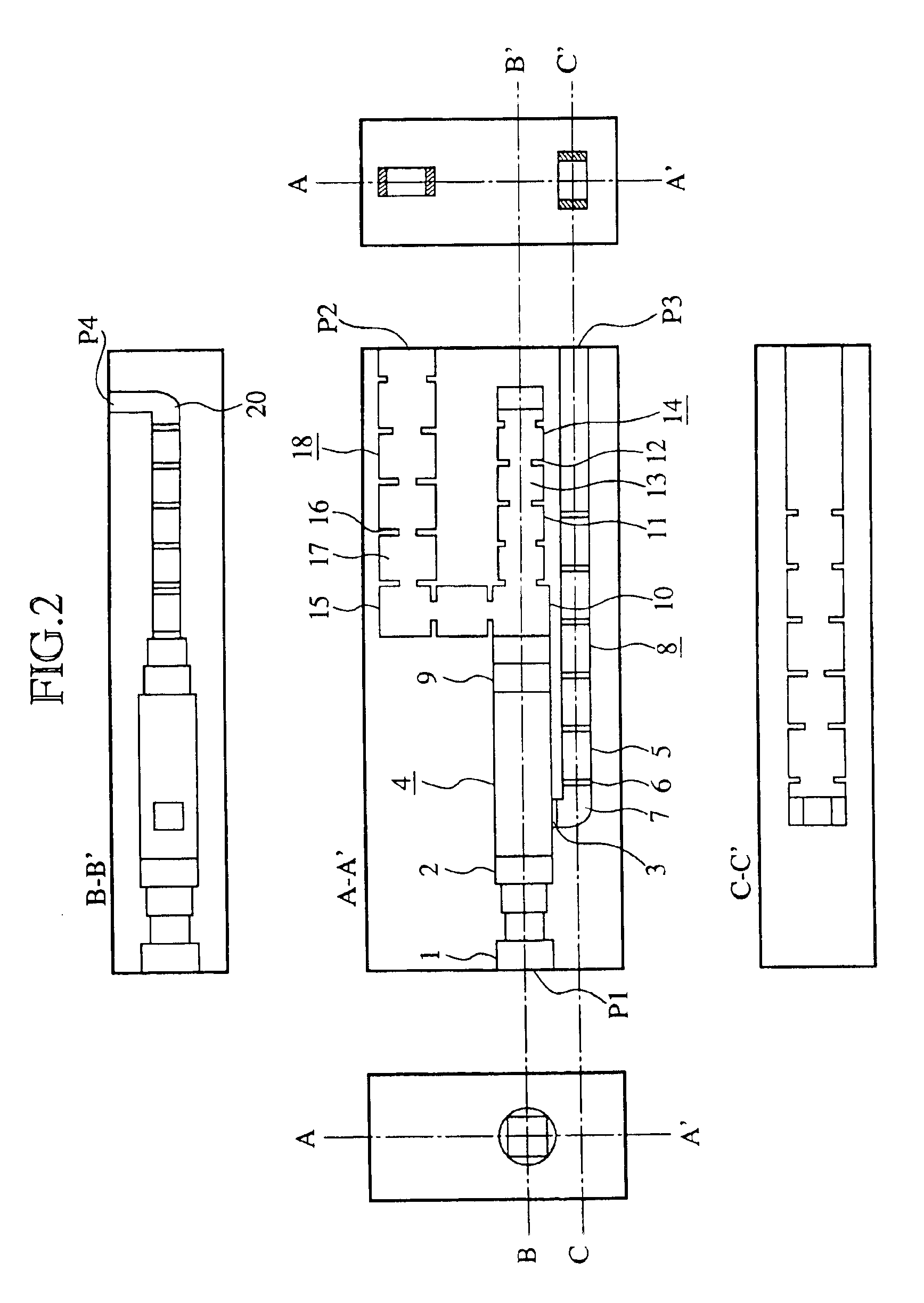Waveguide group branching filter
a filter and waveguide technology, applied in the direction of waveguides, electrical devices, coupling devices, etc., can solve the problems of reducing manufacturing costs, difficult miniaturization, and large bulky circuit structure of the entire circuit, and achieve excellent reflection and polarized wave isolation characteristics
- Summary
- Abstract
- Description
- Claims
- Application Information
AI Technical Summary
Benefits of technology
Problems solved by technology
Method used
Image
Examples
embodiment 1
FIG. 2 is a diagrammatic showing of a waveguide group branching filter according to Embodiment 1 of the present invention. In FIG. 2, reference numeral 1 denotes a circular-to-square waveguide multistage transformer; 2 denotes a square waveguide connected to one end of the circular-to-square waveguide multistage transformer 1; 3 denotes a coupling hole formed through one sidewall of the square waveguide 2; 4 denotes a branch waveguide polarizer / branching filter formed by the square waveguide 2 and the coupling hole 3; 5 denotes a rectangular waveguide connected to the branching end of the branch waveguide polarizer / branching filter and having an E-plane bend; 6 denotes n (where n is an integer equal to or greater than 1) iris-type coupling holes provided in the rectangular waveguide 5; 7 denotes n rectangular cavity resonators separated by the coupling hole 3 and the n coupling holes 6 in the rectangular waveguide 5; and 8 denotes generally a waveguide band-pass filter (a first wave...
embodiment 2
FIG. 3 is a diagrammatic showing of a waveguide group branching filter according to Embodiment 2 of the present invention. In FIG. 3, reference numeral 21 denotes two coupling holes formed through one side wall of the square waveguide 2; and 22 denotes generally a branch waveguide polarizer / branching filter formed by the square waveguide 2 and the two coupling holes 21.
While Embodiment 1 is provided, as depicted in FIG. 2, with the branch waveguide polarizer / branching filter 4 composed of the square waveguide 2 and the single coupling hole 3, Embodiment 2 is provided, as depicted in FIG. 3, with the branch waveguide polarizer / branching filter 22 in place of the branch waveguide polarizer / branching filter 4 shown in FIG. 2; however, this embodiment is identical in construction with Embodiment 1 of FIG. 2 except the above.
The radio waves V1 and V2 incident from the input port P1 do not couple with the two coupling holes 21 in the branch waveguide polarizer / branching filter 22 having t...
embodiment 3
FIG. 4 is a diagrammatic showing of a waveguide group branching filter according to Embodiment 3 of the present invention. In FIG. 4, reference numeral 23 denotes a thin metal sheet inserted in the square waveguide 2; and 24 denotes generally a branch waveguide polarizer / branching filter made up of the square waveguide 2, the single coupling hole 3 and the thin metal sheet 23.
While Embodiment 1 is provided, as depicted in FIG. 2, with the branch waveguide polarizer / branching filter 4 composed of the square waveguide 2 and the single coupling hole 3, Embodiment 3 is provided, as depicted in FIG. 4, with the branch waveguide polarizer / branching filter 24 in place of the branch waveguide polarizer / branching filter 4 shown in FIG. 2; however, this embodiment is identical in construction with Embodiment 1 of FIG. 2 except the above.
The radio wave H1 incident from the input port P1 forms a standing wave due to the cutoff effect by the thin metal sheet 23, then couples with the fundamental...
PUM
 Login to View More
Login to View More Abstract
Description
Claims
Application Information
 Login to View More
Login to View More - R&D
- Intellectual Property
- Life Sciences
- Materials
- Tech Scout
- Unparalleled Data Quality
- Higher Quality Content
- 60% Fewer Hallucinations
Browse by: Latest US Patents, China's latest patents, Technical Efficacy Thesaurus, Application Domain, Technology Topic, Popular Technical Reports.
© 2025 PatSnap. All rights reserved.Legal|Privacy policy|Modern Slavery Act Transparency Statement|Sitemap|About US| Contact US: help@patsnap.com



